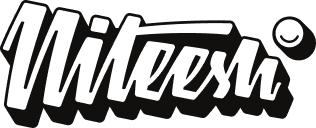Note: This is a reflection on Martin Heidegger’s essay.
Martin Heidegger’s The Question Concerning Technology is one of those works that resurfaces whenever technology takes a leap forward. Written in 1954, it feels strikingly relevant in today’s era of AI, algorithms, and augmented reality. Heidegger’s key move is to take us beyond the surface of technology, beyond gadgets, machines, and tools. Into the deeper question of what technology reveals about the world and about ourselves. Let’s look at a few key points.
Technology Is More Than Tools
The usual way we think of technology is straightforward: it’s a means to an end, something humans invent and use. This is the instrumental and anthropological perspective. But Heidegger calls this a “correct but not true” view. Correct, because yes, we create and use tools. Not true, because it overlooks technology’s essence.
If we stop at tools, we miss the deeper point: technology is a way the world discloses itself to us. It doesn’t just help us act upon reality; it shapes how we perceive reality itself.
Revealing and the Roots of “Techne”
To show this, Heidegger revisits Aristotle’s four causes: material (what it’s made of), formal (its shape), final (its purpose), and efficient (who makes it). For him, these aren’t just stages of production but ways of bringing forth. A blooming flower, a crafted sculpture, or a designed interface, all are ways the world reveals itself.
This revealing is what the Greeks called aletheia, or truth. And here’s the key: technology, too, is revealing. Not only an act of making, but an act of truth-making.
Enframing and the Standing-Reserve
If technology is revealing, we must ask: how does modern technology reveal? Heidegger names its mode of revealing enframing (Ge-stell). Unlike the gentle unfolding of a flower, enframing is a demanding, ordering kind of revealing. It commands the world to stand ready as a resource.
A river is no longer just a river; it is hydroelectric power waiting to be tapped. A forest is no longer just trees; it is timber stock. Even humans are caught in this order; we become “human capital,” “resources,” or “attention spans.” Heidegger calls this the standing-reserve (Bestand). Everything, including us, becomes something to be stored, optimised, and used.
The Danger of a Single Lens
The danger isn’t that machines will rule us, nor that technology is inherently destructive. The danger is subtler: when enframing becomes the only lens we use, other truths vanish. We lose the river as river, the forest as forest, the human as human. Technology is not neutral; it actively shapes how reality appears to us.
This is why Heidegger insists technology is never “just a tool.” It forms a worldview. And if we fail to notice this worldview, we risk being trapped within it.
A Glimpse of Rescue
Yet within this danger lies what Heidegger calls a “saving power.” By recognising enframing, we also glimpse its limits. The very act of questioning technology allows space for other forms of revealing.
For Heidegger, art has a special role here. Not art as decoration, but art as techne, a way of knowing that discloses truth differently. Where technology orders, art opens. Where enframing reduces, art expands.
When Heidegger talks about something being the “saving power,” he’s talking about that older definition:
Art as disclosure: Art does not merely decorate; it opens a reality. A temple opens to a location’s sanctity, a poem opens to language’s dimensions, a painting opens to a visual mode.
Art as counterweight to enframing: While enframing standardises and reduces everything to resources, art opens us up to a different manner of being. Art shows the world as non “standing-reserve,” but as richly complex, non-reducible.
World-forming art: Heidegger regularly uses an account of Greek temple or monumental lines of poetry (e.g. Hölderlin) to signal how art does something more than depict a world; it generates a world people inhabit.
So, if he speaks about art being able to “rescue” us, he is not talking about museums or spectacle. He is talking about practices of creativity and expression that disclose truth beyond the ability of technology; truths that elude reduction to efficiency, measure, or function.
- Art could be experiential works that lead us to look at the world as something different from information.
- It could be design that focuses on meaning, context, and care, instead of optimisation only.
- Perhaps it is architecture that unveils a concept of place, rather than being just infrastructure.
In short, Heidegger is pointing to art as a kind of disclosing truth that interrupts the grasp of technology.
Why This Matters Today
It’s easy to see how this plays out now. AI systems reduce creativity to probabilities, platforms reduce social life to engagement metrics, AR risks reducing environments to data overlays. We live in a standing reserve where attention, behaviour, and even identity are treated as extractable resources.
But the saving power is also here. By recognising how AI enframes us, we can design with awareness. We can ask: how should AR reveal a space, not merely optimise it? How might we create technologies that disclose the richness of the world instead of flattening it?
The task isn’t to reject technology, but to notice the kind of world it makes visible and the kind it conceals.
Final Thought
Heidegger’s essay is often misread as anti-technology. It isn’t. It is a call to awareness. Technology is never only about efficiency, productivity, or convenience. It’s about the worlds we open, and the worlds we close off.
The question of technology is, in the end, a question about ourselves. What do we want to reveal? And what do we risk forgetting if we never ask?
